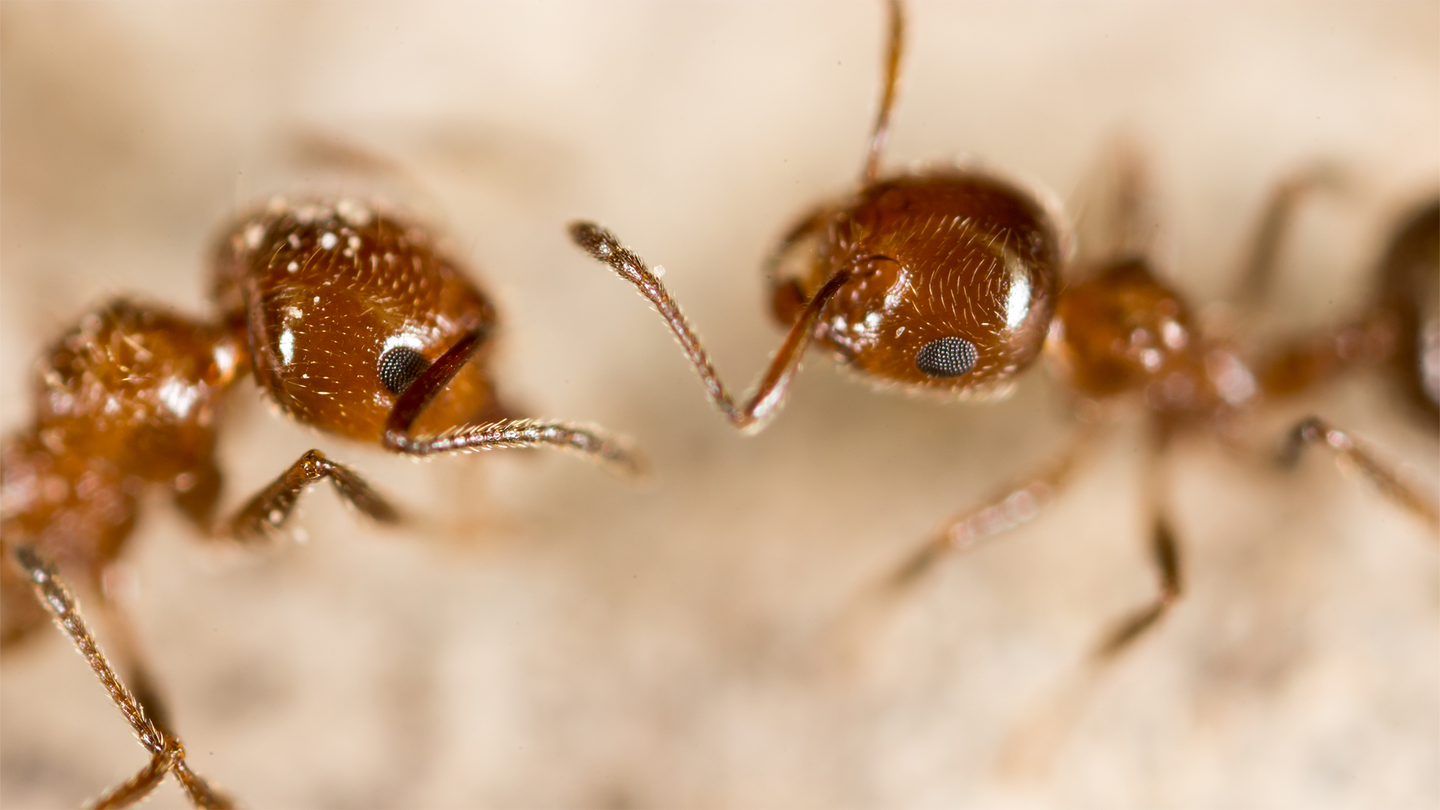
If you see one of the thousands of billions of the planet’s ants on your kitchen counter, it’s never truly just one bug. That lone ant usually signals to an entire colony when there is both food and danger nearby. A study published June 14 in the journal Cell takes a closer look into how certain scent markers that the insects use to communicate with one another activate a specific part of the ant brain, which can then change the behavior of an entire nest.
[Related: This spider pretends to be an ant, but not well enough to avoid being eaten.]
“Humans aren’t the only animals with complex societies and communication systems,” co-author and neurobiologist at The Rockefeller University Taylor Hart said in a statement. “Over the course of evolution, ants have evolved extremely complex olfactory systems compared to other insects, which allows them to communicate using many different types of pheromones that can mean different things.”
The study suggests that ants do have their own communication centers in their brains, just like humans do. They can interpret the danger-signaling pheromones secreted by other ants—and their olfactory clues are potentially more advanced than that of other insects like honeybees. Earlier studies have suggested that bees rely on multiple parts of their brain to coordinate in response to one single pheromone.
“There seems to be a sensory hub in the ant brain that all the panic-inducing alarm pheromones feed into,” co-author and evolutionary biologist at The Rockefeller University Daniel Kronauer said in a statement.
In this study, the team looked at clonal raider ants. They used an engineered protein called GCaMP to scan the brain activity of ants that were exposed to danger signals. GCaMP attaches itself to calcium ions, which then flares up with brain activity. A fluorescent chemical compound is then visible on high-resolution microscopes that are adapted to view them.
On these scans, the team saw that only a small part of the ants’ brains lit up in response to danger signals. However, the ants still showed instant and complex behaviors. They named these behaviors the panic response, since the ants evacuated the nest, fled, or transported their offspring away from the nest.
Species of ants that have different colony sizes also use other pheromones to send a variety of messages.
“We think that in the wild, clonal raider ants usually have a colony size of just tens to hundreds of individuals, which is pretty small as far as ant colonies go,” said Hart. “Frequently, these small colonies tend to have panic responses as their alarm behavior because their main goal is to get away and survive. They can’t risk a lot of individuals. Army ants, the cousins of the clonal raider ants, have massive colonies—hundreds of thousands or millions of individuals—and they can be much more aggressive.”
[Related: The protein that keeps worker ants in line can also make them queen.]
Ants within a colony meticulously organize themselves by role and caste, and the ants within different castes and roles in the colony also have slight variations in their anatomy. The researchers used clonal raider ants of one sex within one caste and role to ensure consistency. Observing only female worker ants made it easier to observe widespread patterns.
As the team gains a clearer understanding of the neural differences between ant roles, sexes, and castes, which could help them decipher how different ant brains process the same danger signals.
The post Ants brains are surprisingly good at communicating danger to others appeared first on Popular Science.
Articles may contain affiliate links which enable us to share in the revenue of any purchases made.
from | Popular Science https://ift.tt/qaSxotH




0 Comments